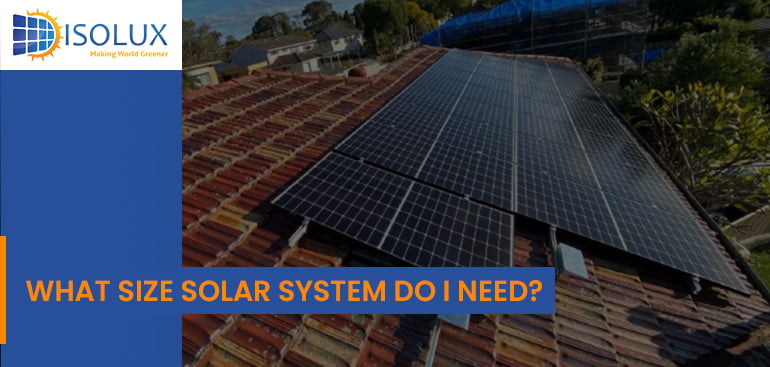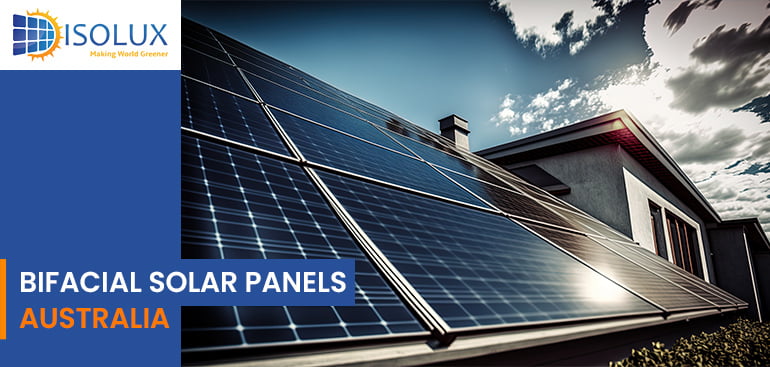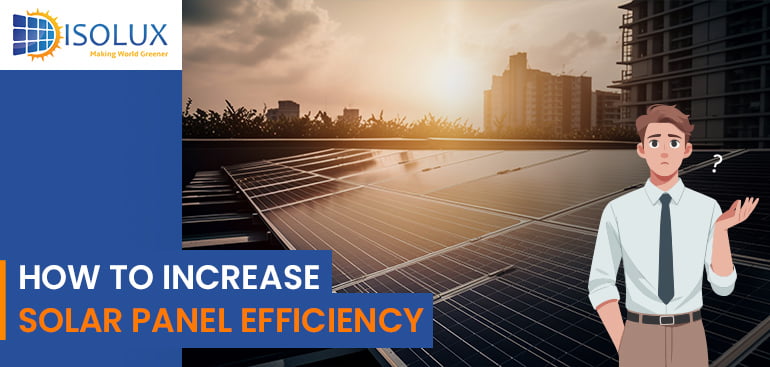A solar system is a crucial investment that can provide clean energy, reduce electricity bills and save the environment. Therefore, it is important to choose the right size solar system that fits your energy needs and provides maximum benefits.
Know You Energy Usage
The first step to determining the right size solar system is to understand your energy usage. You need to evaluate how much electricity you use in a day, week, or month. This information can be found on your electricity bills. You can also monitor your energy usage with a smart meter or energy monitoring device.
Determining Your Solar System Size
Here’s a general guide to help you determine the appropriate size:
Electricity Usage: Look at your electricity bills to determine your average daily or monthly electricity usage. This is typically measured in kilowatt-hours (kWh). Knowing your energy usage is key to sizing your solar system appropriately.
Energy Goals: If your goal is to cover 100% of your electricity use with solar power, you’ll need a system sized to match or exceed your current usage. If you’re looking to supplement your energy use and reduce bills, a smaller system might suffice.
Sunlight Availability: The amount of sunlight your location receives also plays a crucial role. In areas with high sunlight, such as Sydney, you might require fewer panels to produce the same amount of energy as in less sunny areas.
Roof Space: The available space on your roof limits the size of the solar system you can install. More efficient panels can generate more power in a smaller space but are often more expensive.
Solar Panel Efficiency: Different solar panels have different efficiency ratings. Higher efficiency panels can produce more electricity in a smaller area but usually come at a higher cost.
System Size Guidelines: As a rough guide, a typical Australian home might use a system between 3kW and 6.6kW. For example, a 5kW system is common and can generate about 20 kWh per day in a sunny area like Sydney, which is around the average daily use of a typical Australian home.
Budget: Your budget also plays a critical role in deciding the size of the solar system. Larger systems are more expensive but offer more savings in the long run.
Future Energy Needs: Consider any future changes to your energy consumption, such as the addition of an electric vehicle, home renovations, or a growing family.
Local Regulations and Incentives: Be aware of any local regulations, feed-in tariffs, and incentives as they can impact the optimal size of your system.
Solar Panel System Size
Here are the various solar system sizes along with their respective installation costs, annual savings, and payback periods for homes with a typical morning and evening peak electricity load profile:
| System Size | Installation Cost (AUD) | Annual Savings (AUD) | Payback Period (Years) |
|---|---|---|---|
| 3kW | $3,650 | $821 | 5.1 |
| 4kW | $4,080 | $985 | 4.8 |
| 5kW | $4,600 | $1,130 | 4.7 |
| 6kW (Optimal) | $4,910 | $1,266 | 4.6 |
| 7kW | $5,930 | $1,394 | 4.9 |
| 10kW | $8,190 | $1,757 | 5.3 |
It’s important to note that the optimal system size can depend on various factors such as your energy consumption patterns, the available space on your roof, and your financial goals regarding solar energy. Consult Isolux Solar to help you tailor the system size to your specific needs.
Factors That Affect Solar System Size
Having a solar panel system installed in your home can provide you with many benefits, including lower electricity bills and a reduction in your carbon footprint. Several factors will influence the size of the solar system you need, including:
Energy Consumption
The first factor to consider is your energy consumption. This can be determined by looking at your energy bills over the past year. You should look at the total kilowatt hours (kWh) you use each month, and then average that number over a year. This will give you an idea of the amount of energy you consume regularly.
Roof Space
The second factor to consider is the amount of roof space you have available for your solar panels. Your panels need to be installed in a sunny location that is not shaded by trees or other buildings. The size of your roof will determine the number of solar panels you can have installed, which in turn will determine the size of your system.
Budget
Your budget is also an important consideration when choosing the size of your solar system. Larger systems will cost more, but will also generate more energy and provide you with more savings over time. It is important to find a balance between your budget and your energy needs to ensure that you get the best value for your investment.
Energy goals
Finally, you need to consider your energy goals when choosing the size of your solar system. Do you want to generate all of your energy needs or just a portion? This will determine the size of your solar system and the amount of money you need to invest.
How to Calculate the size of your solar system based on current usage?
To calculate the size of a solar system based on current usage, you’ll need to determine the total amount of energy used by all devices in your home or building and then divide it by the average peak sun hours for your location. Here are the steps:
Measure energy consumption: Get the total kilowatt-hours (kWh) used by all the electrical devices in your home or building in a month or year. You can do this by checking your utility bills or using a smart meter.
Determine the average peak sun hours: The average peak sun hours are the number of hours per day when the sun is at its strongest and provides the most energy. You can find this information for your location online.
Calculate system size: Divide the total monthly or annual energy consumption by the average peak sun hours for your location. This will give you the size of your solar system in kilowatts (kW).
For example, if your monthly energy consumption is 1,000 kWh and the average peak sun hours in your location are 5, then your solar system should be at least 200 kW in size.
Keep in mind that this is just a rough estimate and other factors such as the orientation and tilt of your roof, shading, and local weather patterns can also impact the size and efficiency of your solar system. It’s always recommended to consult with a professional solar installer for a more accurate assessment.
Choose the Right Solar Panel Type
There are two types of solar panels: monocrystalline and polycrystalline. Monocrystalline panels are more efficient and provide more electricity per square meter, but they are also more expensive. Polycrystalline panels are less efficient but more affordable.
You can choose the right panel type based on your budget and energy requirements. A 3kW monocrystalline system can generate up to 3.6kW, while a 3kW polycrystalline system can generate up to 3.3kW.
A bigger solar power system can often be better for several reasons:
Increased Energy Efficiency: A larger solar power system can generate more energy, making it more efficient and able to meet a higher electricity demand.
Improved Cost Savings: The cost of installing a solar system is mostly fixed, such as the cost of equipment, permits, and labor. By increasing the size of the system, the cost per kilowatt is reduced, resulting in cost savings in the long term.
Better Use of Available Space: Larger systems can utilize more roof or ground space, which can help to optimize the use of the available space and generate more electricity.
Greater Energy Independence: A bigger system means a higher level of energy independence, as you will be generating more of your electricity, reducing the need to rely on the grid.
More Energy Resilience: Having a larger solar power system means having more energy stored in batteries, which can be useful during power outages or other emergencies.
Conclusion
Determining the right size solar system is crucial for maximizing your investment and achieving maximum energy savings. You can choose the right size solar panel system by evaluating your energy usage, roof space, budget, and panel type. With the right size system, you can enjoy clean energy, lower electricity bills, and a greener environment. However, it’s important to note that a bigger solar system may not always be the best option. It’s always recommended to consult a professional solar installer for a more accurate assessment and Get a Free Quote now.
Read Next Blog:




